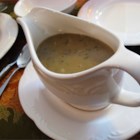Salads
Although salads can definitely be a healthy meal, many of the additions and little extras can rack up the calories of the meal. Stick to using very little or fat free dressing. If fat free, take a look at the sugar content. Add lean proteins instead of having a mounds of bacon crumbles.
"Fresh Smoothies"
 Many times juice concentrate and not natural juice or fruit is used to make smoothies at stores. Sorbets, ice cream and loads of sugar can also be added making a simple smoothie amount to the calories allowed for almost an entire meal. Ask for a small portion, having low fat/fat free additions or protein powder to amp the nutrition.
Many times juice concentrate and not natural juice or fruit is used to make smoothies at stores. Sorbets, ice cream and loads of sugar can also be added making a simple smoothie amount to the calories allowed for almost an entire meal. Ask for a small portion, having low fat/fat free additions or protein powder to amp the nutrition.Energy Bars
The overwhelming amount of sugar that tends to come in many energy bars is what makes them almost a meal replacement when it comes to the calorie count. Although packing a good amount of protein in such a small package, they eliminate the numerous nutrients that are gained from consuming a balanced meal. If a small snack is needed between meals to keep you going, aim for a energy/snack bar that is around 200 calories.
Enhanced Water
Although adding a couple of vitamins to enhance the water, sometimes sugar is also added. This can at times be over looked since most of us don't associate water with any calories.
Turkey Hot Dogs
Turkey quickly comes to mind when thinking of healthy lean proteins but when made into a hot dog this standard may not always remain. Make sure to check and compare nutrition labels to assure that you are aware of what is being consumed.
Low Fat Yogurt
While decreasing the fat, sugar usually goes up. Supplemented with fructose, sucrose, aspartame, sucralose and saccharin just to name a few, watch for how many of these show up on the ingredients list. Don't be fooled by low fat fruit on the bottom yogurts, 6 ounces of yogurt should have 20 g of sugar or less.
Light Olive Oil
This does not mean that it has less calories, only that it is light in color. Olive oil contain omega-3's which are fats that are necessary in our diets.
Foods That Wreck Your Diet












